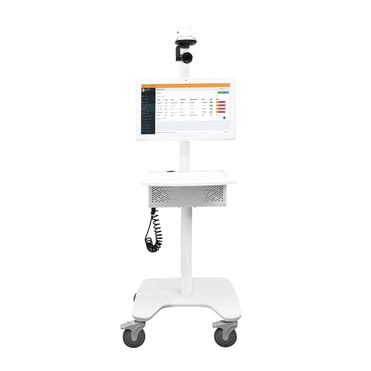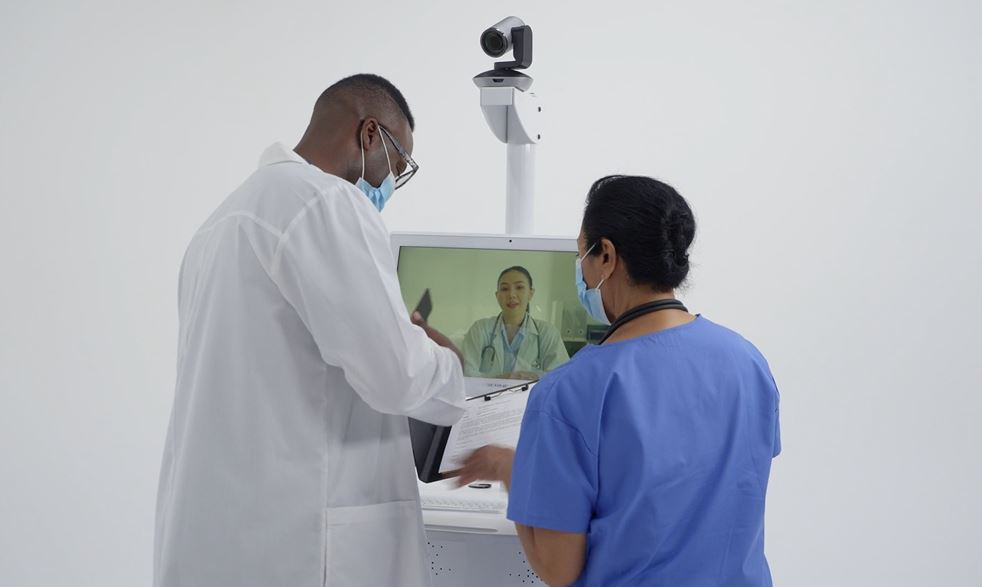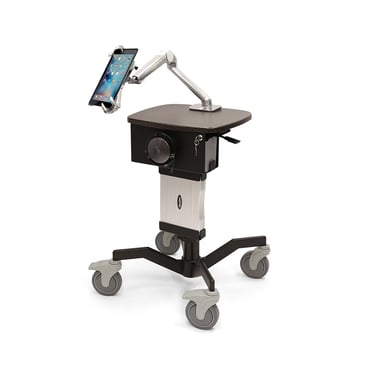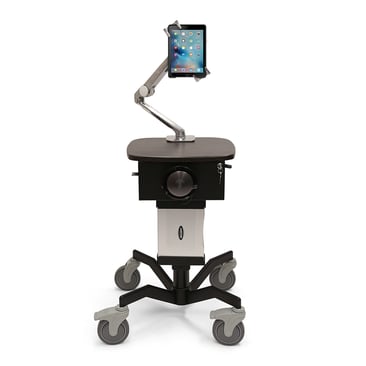By First Products on 9/2/22 4:45 AM
Telehealth services are surging nationwide, driven in part by the recent COVID-19 pandemic that confined many people to their homes, as well as a severe shortage of doctors, nurses, and other medical professionals in nearly every section of the country.
This quickly evolving landscape has presented healthcare providers with an unprecedented opportunity to leverage the telemedicine business model as an additional source of revenue. However, profit will only come from taking careful stock of the economic and operational conditions that would allow a telemedicine program to thrive.
Making the Telemedicine Business Model Work for Providers
While telemedicine was steadily gaining ground before COVID-19, the emergence of a global pandemic only served to accelerate that growth. In fact, in the year ending March 2020, telehealth’s share of commercial insurance claims jumped from 0.17% to 7.52%. A May 2020 report published by consulting firm McKinsey & Company further projected that spending on telehealth in the United States could eventually increase from $3 billion to $250 billion per year.
It’s easy to understand why telemedicine will continue to have appeal well beyond the pandemic, especially considering its potential to bring healthcare to remote rural regions and other previously underserved areas. Telemedicine is also a great option for patients who have difficulty leaving home due to mobility issues, time constraints, or lack of reliable transportation.
But much of the recent telehealth surge has been facilitated by pandemic-driven payment equity mandates that required health insurers to cover telemedicine services. As COVID ebbs and those mandates expire, the payment and reimbursement picture become far less clear. If the telemedicine business model is going to live up to its full potential going forward, and even become a source of profit for providers, three areas must be addressed:
Phase I: Begin Managing Financial Performance
Because of the questions surrounding telemedicine reimbursement, it’s impossible to determine what the profit margin would be for a telehealth program. Instead, providers must take steps to identify and optimize parameters for performance, including;
- Throughput; Since telemedicine technology allows clinicians to see more patients in a shorter period of time, implementing a program would allow providers to increase visitor volume.
- Payment; At the start of the pandemic, the Centers for Medicare & Medicaid Services (CMS) temporarily increased payment for telehealth services to match in-person care, and most private insurers followed suit. However, it’s not clear what the situation might be in the future.
- Expenses: A well-run telemedicine program reduces the number of staff, the amount of supplies, and even the office space a medical practice would otherwise require by as much as 10%.
- Coding: A careful review of telehealth coding protocols is essential to ensuring revenue is not inadvertently left on the table. Areas of scrutiny include: which telehealth CPT codes are covered, which modifiers should be used for telemedicine services, and which place-of-service codes should be utilized in telemedicine claims.
- Tracking Performance Targets: As providers work to develop a telemedicine financial model, they should be sure to incorporate telehealth-specific key performance indicators (KPIs) into their management processes. Doing so will allow providers to better understand the economics of telemedicine vs traditional care models and help establish the role of telehealth services in value-based contracts.
Phase 2: Building an Operational Structure to Support Telemedicine
Once finances have been addressed, providers can begin building an operational structure that will support the efficient delivery of telemedicine services. Areas to focus on include:
- Scheduling: Any telehealth offering should provide a centralized system for remote appointment scheduling, as patients are more likely to adopt telemedicine when scheduling is convenient. It’s also essential to have an apparatus in place to familiarize patients with the telemedicine platform prior to their first remote appointment.
- Technology and Data: A telehealth platform should easily integrate with existing EHR software. In most cases, providers will need to work with vendors to ensure this capability.
- Patient Communication: Creating a patient communication system should also be a top priority. A variety of tools – website, email, social media, patient portholes, answering services, and even snail mail – can all be used for this purpose.

 Mov-it Telemedicine Cart Elite
Mov-it Telemedicine Cart Elite
Phase 3: Determine Where Telemedicine Opportunities Exist.
Telemedicine may not be appropriate for all of the healthcare services offered by a specific provider. To ensure a program’s success, it’s essential that providers formulate a realistic estimate of telehealth opportunities that accounts for:
- Patient and Specialty Mix: During COVID-19, providers found many new ways to use telehealth effectively in a variety of specialty settings. Some of the biggest opportunities exist in primary care, where telemedicine is increasingly being used to monitor diabetes, high blood pressure, and other chronic conditions.
- Physician Preference: Providers need to gain a good understanding of physician attitudes toward telemedicine. While some doctors will enthusiastically embrace telehealth, others may feel more comfortable treating patients while they’re physically present.
- Patient Preference: While most patients have a generally positive view of telehealth, providing the more reticent with some assistance in managing online tools can help raise their comfort level with remote visits.
Effectively Leverage the Telemedicine Business Model with Assistance From First Products
By taking the time to understand how telehealth fits into their overall clinical mission, providers will be better able to implement financial and operational structures to effectively leverage the telemedicine business model.
For more than 70 years, First Products’ unparalleled commitment to customer service, highly experienced sales support, dedication to long-term customer satisfaction, and industry-best warranties have earned us the trust and respect of the healthcare community in the United States and around the world. We’re ready to partner with medical providers and ensure both patients and clinicians are able to benefit from the efficient delivery of quality telemedicine services.
To learn more about how our customizable, perfect-fit solutions can help your facility or practice effectively leverage the telemedicine business model, please contact First Products at 800.854.8304.
_11wX8.5h-FINAL.png?width=721&name=FP-Logo-Horizontal-(COLOR)_11wX8.5h-FINAL.png)







comments